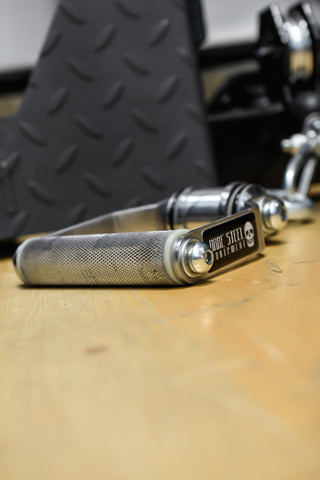When is the last time you changed your routine up? Have you performed an exercise other than standard back squat, bench press, or deadlift? Have you found that your strength is at a plateau? It could be the fact you aren’t making enough changes to your exercises when you are lifting. No matter what our strength plan is, most of us are looking to keep increasing our gains in the big 3 movements of bench, squat, and deadlift. Even if that’s not your ultimate goal, most are looking to gain strength.
So, what can be done about ensuring your chances to maximize your gains and keep you from plateauing? It turns out, changing your loading schemes may not be the most important area to focus on. Research suggests that you change your exercises often to increase your chances of strength gains.
It was thought that to make the most consistent gains, you need a periodized program, or at least, an established one that consists of high intensity and volume in a given exercise to increase your strength and mass.
The Study
To look at the effects of different strength training loading schemes, the authors broke down exercise selections into four different programs matched for training volume. Their focus was on the quadriceps, specifically, the left and right quadriceps femoris CSA (cross sectional area), and right vastus lateralis, vastus medialis, vastus intermedius, and rectus femoris muscles CSA [1]. The study took place for 12 weeks and 1 rep maxes were recorded before and after testing.

The authors selected seventy active men to participate in the study, though only 49 ended up being recorded as some dropped out of the study. These participants were not involved in any prior strength training and were instructed not to perform any additional training during the trial. Then, they were organized into one of the four working groups, or a control group.
The Program
The lifting program presented to the participants were strictly lower body and consisted of squat, deadlift, leg press, or lunges, depending on the group and exercise intensity. The strength training intensity was 6-10 max reps for the exercises performed, along with 2-3 minute rest periods between sets.
Below is a chart from the study that displays the strength training program used.

Results of the Study
The results were evident – gains. Lots of gains. Compared to the control group all of the experimental groups saw gains in their quads. Results also displayed no difference in muscle CSA (cross sectional area) at the posttest. With this, all experimental participants saw increases in their 1RM compared to the control group.
So, what does this data tell us? Well, the training group that saw the highest increase in maximum strength was the CIVE group (see photo of chart above). Squats were maintained as the core lift. As the program continued through the second and third month (mesocycle), other exercises were introduced, while the intensity was a constant.

This demonstrates the importance to vary the exercises within your program to encourage the most efficient strength gains. What appears to be most important is finding what the authors refer to as the “threshold”. It could be assumed that threshold is working to or close to failure in the 6-10 rep range for the given exercise.
Go Ahead and Change It Up
When you are training your core lift like a squat, bench, or deadlift, adding in exercises that are compliments as an accessory and working those close to failure is what will aid in producing strength. You could also work a series of specialty bars to help you mix up old routines in your squat, bench, and deadlift training. Here’s a sample list you could use to keep your training going strong to aid your core lifts to help produce your own strength.
Squats
- Safety Squat Bar Squats
- Front Squats
- Landmine Squats
- Marrs-Bar Squats
- Box Squats
- Buffalo Bar Squats
- Lunges/Box Step Ups
- Camber Bar Squats
*Chains or bands could be utilized with any or all of these lifts as well*
Bench
- Incline Bench
- Decline Bench
- DB FID (flat/incline/decline) Press
- Lever Arm Chest Presses or Machine Presses
*Chains or bands could be utilized with lifts requiring a barbell*
I would recommend trying different specialty bars to spice up the variety of these lifts as well. Bars like the axle bar, swiss bar, or buffalo bar can add a lot of variety and make your pecs work harder.
Deadlift
- Deficit Deadlift
- Block Pulls
- Pin Pulls
- Sumo Deadlift
- Reverse Hyperextension
- Good Mornings (these are great with specialty bars like a camber bar, SSB, or Marrs Bar)
- RDLs
*Chains or bands work really well with these lifts as well*
This list isn’t exclusive and there are always other lifts you could perform that could achieve the strength goals. However, this is a great starting point if you’re not sure where to go or what to do first.
#GetStacked
Reference:
- Fonseca, R. M., Roschel, H., Tricoli, V., Souza, E. O. D., Wilson, J. M., Laurentino, G. C., … Ugrinowitsch, C. (2014). Changes in Exercises Are More Effective Than in Loading Schemes to Improve Muscle Strength. Journal of Strength and Conditioning Research, 28(11), 3085–3092. doi: 10.1519/jsc.0000000000000539

Share:
Discipline Equals Freedom: 15 of the Best Jocko Willink Quotes to Keep You Pushing On
Can Strength Training Benefit Older Adults?